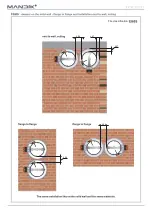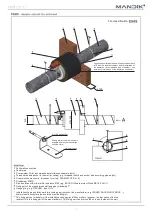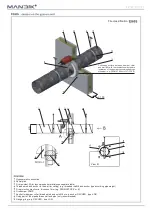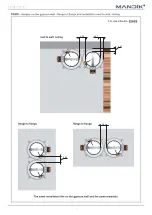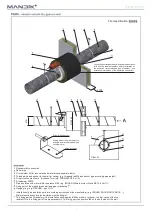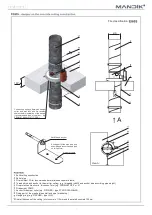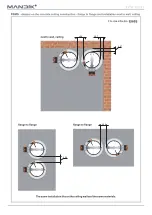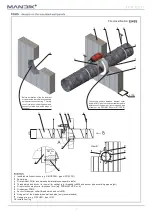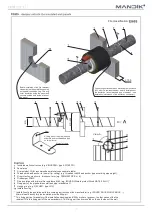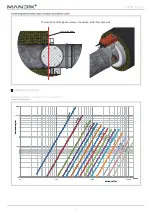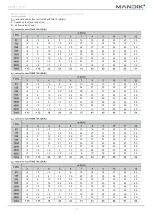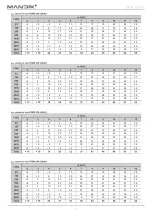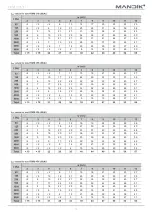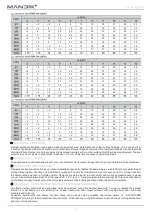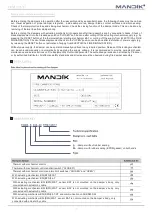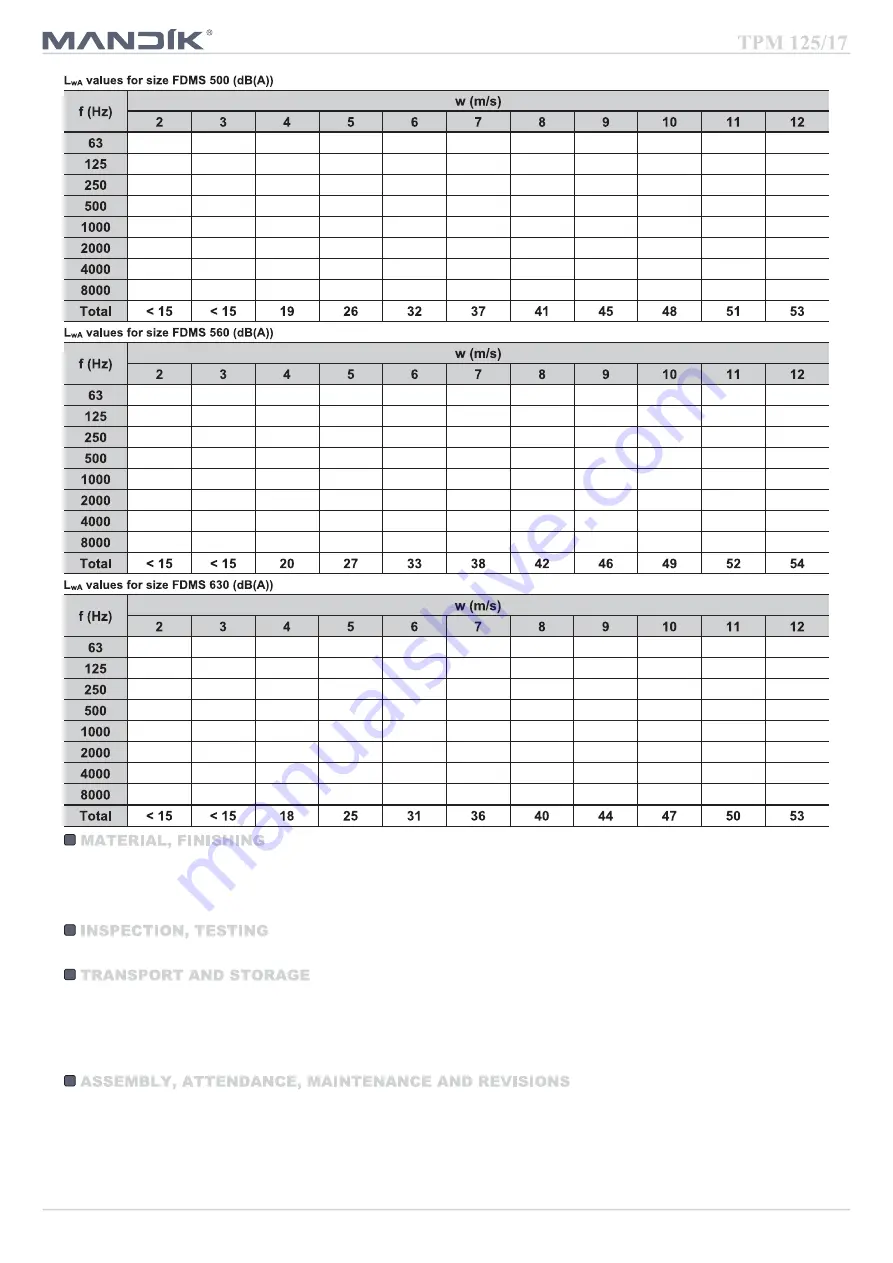
25
< 2
< 2
< 2
5
10
13
17
19
22
24
26
< 2
< 2
9
15
20
24
28
31
33
36
38
< 2
5
14
21
26
31
35
38
41
43
46
< 2
6
15
23
29
33
38
41
44
47
50
< 2
3
13
21
27
32
37
41
44
47
50
< 2
< 2
7
15
22
27
32
36
40
43
46
< 2
< 2
< 2
6
14
19
25
29
33
37
40
< 2
< 2
< 2
< 2
< 2
8
13
18
22
26
29
< 2
< 2
< 2
3
8
12
15
18
20
22
24
< 2
< 2
7
13
18
22
26
29
32
34
36
< 2
3
12
19
25
29
33
36
39
41
44
< 2
4
14
21
27
32
36
39
43
45
48
< 2
< 2
11
19
25
31
35
39
43
45
48
< 2
< 2
5
13
20
26
30
35
39
41
45
< 2
< 2
< 2
5
12
18
23
27
31
35
38
< 2
< 2
< 2
< 2
< 2
6
12
16
21
24
28
< 2
< 2
< 2
4
9
12
16
18
21
23
25
< 2
< 2
8
14
19
23
27
30
32
35
37
< 2
4
13
20
25
30
34
37
40
42
45
< 2
5
14
22
28
32
37
40
43
46
49
< 2
< 2
12
20
26
31
36
40
43
46
49
< 2
< 2
6
14
21
26
31
35
39
42
45
< 2
< 2
< 2
5
13
18
24
28
32
36
39
< 2
< 2
< 2
< 2
< 2
7
12
17
21
25
28
Damper bodies are supplied in the design made of galvanized steel plate without any other surface finishing. The round duct joint
is made of galvanized steel and boards from mineral fibers. Damper blades are made of fire resistant asbestos free boards made
of mineral fibers. Damper controls are made of galvanized materials with no other surface finish. Springs are galvanized. Thermal
protective fuses are made of sheet brass, thickness = 0.5 mm. Fasteners are made of galvanized steel.
The appliance is constructed and preset by the manufacturer, its operation is dependent on proper installation and adjustment.
Dampers are transported on trucks, on transport palettes or boxes, so that the fire dampers are protected from direct water impact.
During transportation, handling and installation processes. The ambient temperature must not 40°C. During transport,
the damper blade must be in CLOSE position. Dampers are stored indoor in environment without any aggressive vapors, gases
or dust. Indoor temperature must be in the range from -30 °C to +40 °C and maximum relative humidity 95 % (avoid condensation
on the damper body). Dampers must be protected against mechanic damages when transported and manipulated.
All effective safety standards and directives must be observed during fire damper assembly. To ensure reliable fire damper
function it is necessary to avoid blocking the closing mechanism and contact surfaces with collected dust, fiber and sticky
materials and solvents.
Assembly, maintenance and damper function check can be done only by qualified and trained person, i.e. “AUTHORIZED
PERSON” according to the manufacturer documentation. All works done on the fire dampers must be done according international
and local norms and laws.
Содержание FDMS Series
Страница 1: ......
Страница 12: ...11 Fire classification 96 47 47 96 96...
Страница 15: ...14 Fire classification 96 47 47 96 96...
Страница 18: ...17 Fire classification 96 47 47 96 96...
Страница 29: ...28...
Страница 30: ...29...
Страница 31: ...30...

